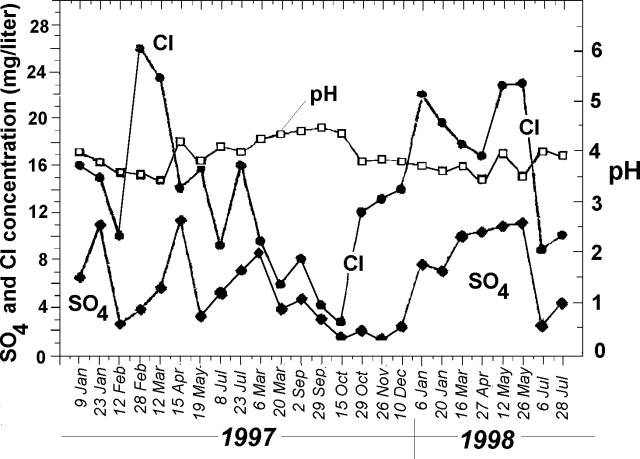Report on Arenal (Costa Rica) — July 1998
Bulletin of the Global Volcanism Network, vol. 23, no. 7 (July 1998)
Managing Editor: Richard Wunderman.
Arenal (Costa Rica) Less vigorous eruptions but lava still escaping during July
Please cite this report as:
Global Volcanism Program, 1998. Report on Arenal (Costa Rica) (Wunderman, R., ed.). Bulletin of the Global Volcanism Network, 23:7. Smithsonian Institution. https://doi.org/10.5479/si.GVP.BGVN199807-345033
Arenal
Costa Rica
10.463°N, 84.703°W; summit elev. 1670 m
All times are local (unless otherwise noted)
Compared to recent months, during July both the number of eruptions and the quantity of material emitted decreased. The lava flow extruded in mid-June descended the NE flank and its front reached 800 m elevation. The lava flow branched at about 1,100 m elevation, forming a NW-trending arm who's front reached 850 m elevation.
Downwind rain samples collected during the dry season (January-April) often were both more acidic and higher in measured anions than those collected in the wetter intervals (figure 86). Although the seismic station was plagued by 10 days with transmission problems, during July the station registered 229 eruptions and 120 hours of tremor.
 |
Figure 86. Rainwater sampled downwind of Arenal, 9 January 1997 through 28 July 1998. Samples collected at station Cárava; error on the pH values was estimated at ± 0.05. Courtesy of OVSICORI-LAQAT. |
Geological Summary. Conical Volcán Arenal is the youngest stratovolcano in Costa Rica and one of its most active. The 1670-m-high andesitic volcano towers above the eastern shores of Lake Arenal, which has been enlarged by a hydroelectric project. Arenal lies along a volcanic chain that has migrated to the NW from the late-Pleistocene Los Perdidos lava domes through the Pleistocene-to-Holocene Chato volcano, which contains a 500-m-wide, lake-filled summit crater. The earliest known eruptions of Arenal took place about 7000 years ago, and it was active concurrently with Cerro Chato until the activity of Chato ended about 3500 years ago. Growth of Arenal has been characterized by periodic major explosive eruptions at several-hundred-year intervals and periods of lava effusion that armor the cone. An eruptive period that began with a major explosive eruption in 1968 ended in December 2010; continuous explosive activity accompanied by slow lava effusion and the occasional emission of pyroclastic flows characterized the eruption from vents at the summit and on the upper western flank.
Information Contacts: E. Fernández, V. Barboza, M. Martinez, E. Duarte, R. Van der Laat, E. Hernández, and T. Marino, Observatorio Vulcanologico y Sismologico de Costa Rica, Universidad Nacional (OVSICORI-UNA), Apartado 86-3000, Heredia, Costa Rica.

